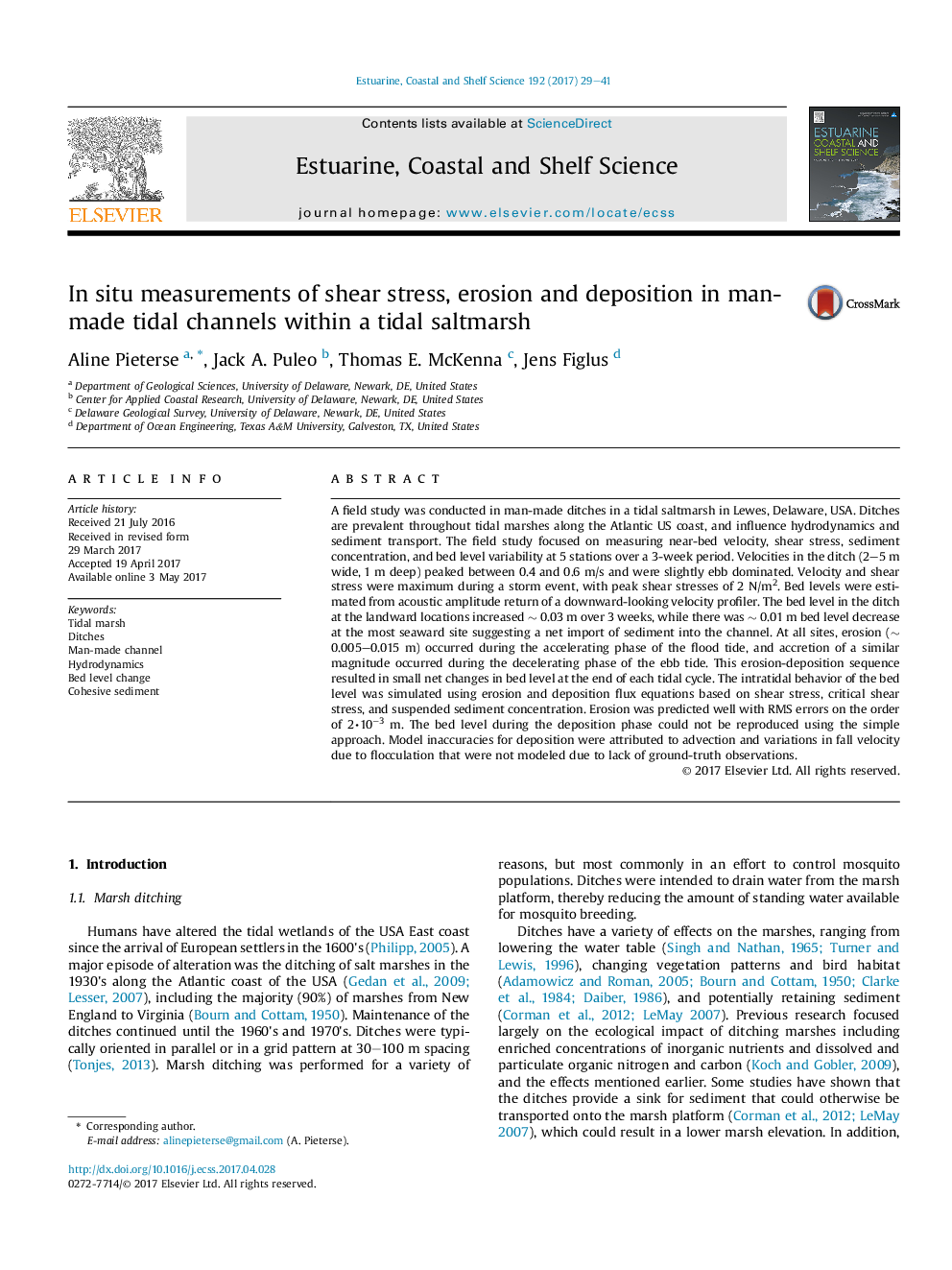| Article ID | Journal | Published Year | Pages | File Type |
|---|---|---|---|---|
| 5765161 | Estuarine, Coastal and Shelf Science | 2017 | 13 Pages |
A field study was conducted in man-made ditches in a tidal saltmarsh in Lewes, Delaware, USA. Ditches are prevalent throughout tidal marshes along the Atlantic US coast, and influence hydrodynamics and sediment transport. The field study focused on measuring near-bed velocity, shear stress, sediment concentration, and bed level variability at 5 stations over a 3-week period. Velocities in the ditch (2-5Â m wide, 1Â m deep) peaked between 0.4 and 0.6Â m/s and were slightly ebb dominated. Velocity and shear stress were maximum during a storm event, with peak shear stresses of 2Â N/m2. Bed levels were estimated from acoustic amplitude return of a downward-looking velocity profiler. The bed level in the ditch at the landward locations increased â¼ 0.03Â m over 3 weeks, while there was â¼ 0.01Â m bed level decrease at the most seaward site suggesting a net import of sediment into the channel. At all sites, erosion (â¼ 0.005-0.015Â m) occurred during the accelerating phase of the flood tide, and accretion of a similar magnitude occurred during the decelerating phase of the ebb tide. This erosion-deposition sequence resulted in small net changes in bed level at the end of each tidal cycle. The intratidal behavior of the bed level was simulated using erosion and deposition flux equations based on shear stress, critical shear stress, and suspended sediment concentration. Erosion was predicted well with RMS errors on the order of 2â 10â3 m. The bed level during the deposition phase could not be reproduced using the simple approach. Model inaccuracies for deposition were attributed to advection and variations in fall velocity due to flocculation that were not modeled due to lack of ground-truth observations.
